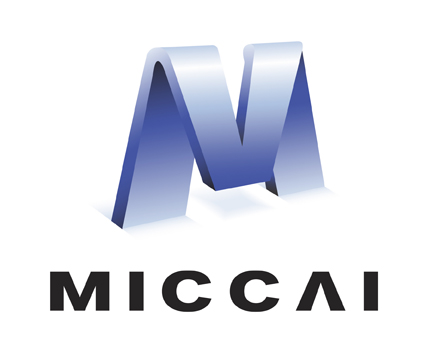Abstract
Tumor Programmed Death-Ligand 1 (PD-L1) expression is a crucial biomarker to identify tumor patients who may have an enhanced response to anti-Programmed Death-1 (PD-1)/PD-L1 treatment. Tumor proportion score (TPS) is an indicator to describe the frequency of PD-L1 expression and is essential for selecting from different tumor therapies. In this paper, we propose a novel deep learning-based framework for automated tumor proportion scoring. Specifically, we introduce the clinical diagnosis process to our framework. The framework consists of a cellular localization network (C-Net) and a regional segmentation network (R-Net). The C-Net is dedicated to classifying cells and generating TPS, and R-Net learns to distinguish tumor regions from their normal counterparts. The predictions made by R-Net can, in turn, be used to refine the TPS. We have consolidated the visual TPS from multiple pathologists for clinical verification. Concordance measures computed on a set of WSI provide evidence that our method matches visual scoring from multiple pathologists (MAE = 7.405, RMSE = 11.25, PCCs = 0.9305, SRCC = 0.967).
Y. Kang and H. Li—Equally-contributed.
Access this chapter
Tax calculation will be finalised at checkout
Purchases are for personal use only
Similar content being viewed by others
References
Widmaier, M., et al.: Comparison of continuous measures across diagnostic PD-L1 assays in non-small cell lung cancer using automated image analysis. Mod. Pathol. 1–11 (2019)
Kapil, A., et al.: Deep semi supervised generative learning for automated tumor proportion scoring on NSCLC tissue needle biopsies. Sci. Rep. 8(1), 1–10 (2018)
Taylor, C.R., et al.: A multi-institutional study to evaluate automated whole slide scoring of immunohistochemistry for assessment of programmed death-ligand 1 (PD-L1) expression in non-small cell lung cancer. Appl. Immunohistochem. Mol. Morphol. 27(4), 263–269 (2019)
McLaughlin, J., et al.: Quantitative assessment of the heterogeneity of PD-L1 expression in non-small-cell lung cancer. JAMA Oncol. 2(1), 46–54 (2016)
Ettinger, D.S., et al.: Non-small cell lung cancer. NCCN clinical practice guidelines in oncology (NCCN Guidelines) (2019)
Mi, H., et al.: A quantitative analysis platform for PD-L1 immunohistochemistry based on point-level supervision model. In: Proceedings of the 28th International Joint Conference on Artificial Intelligence, pp. 6554–6556. AAAI Press (2019)
Ronneberger, O., Fischer, P., Brox, T.: U-net: convolutional networks for biomedical image segmentation. In: Navab, N., Hornegger, J., Wells, W.M., Frangi, A.F. (eds.) MICCAI 2015. LNCS, vol. 9351, pp. 234–241. Springer, Cham (2015). https://doi.org/10.1007/978-3-319-24574-4_28
Abraham, N., Khan, N.M.: A novel focal tversky loss function with improved attention u-net for lesion segmentation. In: 2019 IEEE 16th International Symposium on Biomedical Imaging (ISBI 2019), pp. 683–687 (2019)
Lin, T.-Y., et al.: Focal loss for dense object detection. In: Proceedings of the IEEE international conference on computer vision, pp. 2980–2988 (2017)
Chen, L.-C., et al.: Encoder-decoder with atrous separable convolution for semantic image segmentation. In: Proceedings of the European conference on computer vision, pp. 801–818 (2018)
Ribera, J., Guera, D., Chen, Y., Delp, E.J.: Locating objects without bounding boxes. In: Proceedings of the IEEE Conference on Computer Vision and Pattern Recognition, pp. 6479–6489 (2019)
Yan, M., et al.: \( S^{3} \) Net: trained on a small sample segmentation network for biomedical image analysis. In: 2019 IEEE International Conference on Bioinformatics and Biomedicine, pp. 1402–1408 (2019)
Long, J., Shelhamer, E., Darrell, T.: Fully convolutional networks for semantic segmentation. In: Proceedings of the IEEE conference on computer vision and pattern recognition, pp. 3431–3440 (2015)
Ackowlegement
Hereby the authors would like to thank appreciate the support from the Medical Diagnosis team at AstraZeneca for their scientific comments on this study. This work is financially supported by National Natural Science Foundation of China (No. 61701404) and partially supported by Major Program of National Natural Science Foundation of China (No. 81727802), Natural Science Foundation of Shaanxi Province of China (No. 2020JM-438).
Author information
Authors and Affiliations
Corresponding authors
Editor information
Editors and Affiliations
Rights and permissions
Copyright information
© 2020 Springer Nature Switzerland AG
About this paper
Cite this paper
Kang, Y. et al. (2020). Automated Tumor Proportion Scoring for Assessment of PD-L1 Expression Based on Multi-Stage Ensemble Strategy. In: Liu, M., Yan, P., Lian, C., Cao, X. (eds) Machine Learning in Medical Imaging. MLMI 2020. Lecture Notes in Computer Science(), vol 12436. Springer, Cham. https://doi.org/10.1007/978-3-030-59861-7_8
Download citation
DOI: https://doi.org/10.1007/978-3-030-59861-7_8
Published:
Publisher Name: Springer, Cham
Print ISBN: 978-3-030-59860-0
Online ISBN: 978-3-030-59861-7
eBook Packages: Computer ScienceComputer Science (R0)




